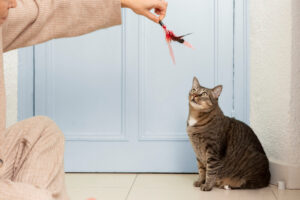Cats bring joy and companionship to many households, and understanding their lifespan is essential for any pet owner. Indoor-outdoor cats experience different environmental factors than strictly indoor cats, influencing their life expectancy. This article explores the average lifespan of indoor-outdoor cats, the risks they face, and tips to help them live longer healthier lives.
Understanding Indoor-Outdoor Cats
Indoor-outdoor cats split their time between the comforts of home and the freedom of the outdoors. These cats have access to outdoor spaces, allowing them to explore, hunt, and engage with their environment, which can greatly influence their behavior and health.
Average Lifespan of Indoor-Outdoor Cats
The lifespan of indoor-outdoor cats varies widely. On average, these cats live between 7 to 10 years. This contrasts with strictly indoor cats, which often live 12 to 15 years or more. The shorter lifespan is typically due to the increased risks associated with outdoor living.
Factors Affecting Lifespan
Environmental Factors
- Climate and Weather: Extreme weather conditions can threaten outdoor cats, including heatstroke, hypothermia, and dehydration.
- Urban vs. Rural: Cats in rural areas might face different dangers compared to those in urban settings, such as wildlife encounters versus traffic.
Health Factors
- Disease Exposure: Outdoor cats are more exposed to infectious diseases like FIV (Feline Immunodeficiency Virus) and FeLV (Feline Leukemia Virus).
- Injury Risk: The likelihood of injuries from fights with other animals or accidents increases significantly.
Human Factors
- Owner Care: The level of care and supervision provided by the owner, including regular veterinary visits and proper nutrition, greatly influences lifespan.
- Community Risks: Areas with heavy traffic, higher predator populations, or prevalent use of pesticides can pose additional risks.
Common Health Risks for Indoor-Outdoor Cats
Diseases
- Feline Leukemia Virus (FeLV): A highly contagious virus that can be fatal.
- Feline Immunodeficiency Virus (FIV): Impacts the immune system, making cats susceptible to other infections.
- Rabies: A deadly virus transmitted through bites from infected animals.
Injuries
- Vehicle Collisions: Traffic poses a significant danger, especially in urban areas.
- Animal Fights: Encounters with other animals can lead to serious injuries or infections.
Other Hazards
- Toxins: Exposure to harmful substances like antifreeze, pesticides, and poisonous plants.
- Parasites: Increased risk of fleas, ticks, and worms.
Benefits of Indoor-Outdoor Lifestyle
Despite the risks, an indoor-outdoor lifestyle can offer numerous benefits:
Physical Health
- Exercise: Regular outdoor activity helps maintain a healthy weight and muscle tone.
- Natural Behaviors: Opportunities to hunt and explore fulfill instincts, reducing stress and boredom.
Mental Health
- Stimulation: Outdoor environments provide mental stimulation, which can prevent behavioral issues stemming from boredom.
- Varied Environment: Changes in scenery and stimuli can improve overall well-being and happiness.

Risks of Outdoor Exposure
Predators
- Wildlife: Predatory animals such as coyotes, birds of prey, and even domestic dogs pose a threat.
- Human Threats: Some people may pose dangers to cats, whether intentionally or accidentally.
Traffic
- Road Accidents: Fast-moving vehicles are a constant danger in many areas.
- Injuries: Even minor accidents can result in serious injuries or infections.
Toxins and Poisons
- Chemical Exposure: Household chemicals, pesticides, and antifreeze are common dangers.
- Toxic Plants: Many plants, such as lilies and poinsettias, are toxic to cats.
Improving Lifespan for Indoor-Outdoor Cats
Preventive Measures
- Microchipping: Ensures cats can be identified and returned if lost.
- Neutering/Spaying: Reduces risks of certain cancers and roaming behaviors.
Veterinary Care
- Regular Check-Ups: Essential for early detection of health issues.
- Vaccinations: Protect against common diseases like rabies and FeLV.
Diet and Nutrition
Balanced Diet
- High-Quality Food: Providing nutritious, high-quality cat food is crucial.
- Proper Portions: Overfeeding or underfeeding can lead to health issues.
Feeding Tips
- Scheduled Feeding: Helps regulate appetite and prevent overeating.
- Fresh Water: Always ensure fresh, clean water is available.
Importance of Regular Vet Visits
Vaccinations
- Core Vaccines: Protect against rabies, feline distemper, and other critical diseases.
- Non-Core Vaccines: Depending on lifestyle, additional vaccines may be recommended.
Check-Ups
- Bi-Annual Visits: Regular vet visits can catch and treat issues early.
- Health Monitoring: Regular blood work and exams monitor overall health.
Safe Outdoor Environment
Secure Space
- Fenced Areas: Secure fencing can keep cats safe within a designated area.
- Supervised Outdoor Time: Monitoring outdoor time reduces risks of injury and exposure.
Enrichment
- Toys and Structures: Provide outdoor toys and climbing structures to keep cats entertained.
- Safe Plants: Ensure any plants are non-toxic to cats.
Recognizing Signs of Illness
Symptoms to Watch For
- Lethargy: Unusual tiredness or lack of energy can indicate health issues.
- Appetite Changes: Sudden loss of appetite or excessive eating.
Early Detection
- Behavioral Changes: Monitor for any unusual behaviors, such as hiding or aggression.
- Regular Health Checks: Routine exams help catch issues before they become severe.
Parasite Prevention and Control
Fleas and Ticks
- Preventive Treatments: Regular flea and tick treatments can prevent infestations.
- Regular Checks: Frequently check for signs of parasites.
Worms
- Deworming: Regular deworming is essential, especially for outdoor cats.
- Clean Living Spaces: Keep living areas clean to reduce parasite risks.
Grooming and Hygiene
Daily Care
- Brushing: Regular brushing reduces shedding and prevents matting.
- Bathing: Occasional baths may be necessary, especially if the cat gets dirty outside.
Hygiene Tips
- Clean Litter Box: Even outdoor cats need a clean indoor litter box.
- Nail Trimming: Regularly trim nails to prevent overgrowth and injury.

Social Interaction and Stimulation
Enrichment Activities
- Playtime: Regular playtime keeps cats physically and mentally active.
- Toys: Provide a variety of toys to keep them engaged.
Companionship
- Other Pets: Consider the company of other pets for social interaction.
- Human Interaction: Spend quality time with your cat to strengthen your bond.
Training Indoor-Outdoor Cats
Commands and Boundaries
- Basic Commands: Teach basic commands like “come” and “stay” for safety.
- Outdoor Boundaries: Establish clear boundaries for where the cat can roam.
Safety Training
- Road Awareness: Train cats to be cautious near roads and driveways.
- Avoiding Dangers: Teach them to avoid dangerous areas and situations.
Seasonal Care Tips
Winter Care
- Warm Shelter: Ensure your cat has access to warm shelter during cold weather.
- Check for Frostbite: Regularly check for signs of frostbite on ears, paws, and tail.
Summer Care
- Hydration: Ensure fresh water is always available to prevent dehydration.
- Shade: Provide shaded areas to prevent overheating.
Impact of Breed on Lifespan
Breed-Specific Expectations
- Purebred vs. Mixed Breed: Purebred cats may have specific health issues that impact lifespan.
- Long-Lived Breeds: Some breeds are known for their longevity, such as Siamese and Maine Coons.
Case Studies and Anecdotes
Real-Life Stories
- Success Stories: Share stories of indoor-outdoor cats living long, healthy lives.
- Lessons Learned: Highlight lessons from both positive and negative experiences.
Myths and Misconceptions
Debunking Myths
- Outdoor Cats are Happier: Address the misconception that all cats prefer the outdoors.
- Lifespan Myths: Clarify common myths about the lifespan of indoor-outdoor cats.
Frequently Asked Questions
How long do indoor-outdoor cats live?
Indoor-outdoor cats generally live between 7 to 10 years, though this can vary widely based on numerous factors.
What are the biggest risks for indoor-outdoor cats?
The biggest risks include traffic accidents, predator attacks, diseases, and exposure to toxins.
How can I extend the lifespan of my indoor-outdoor cat?
Providing regular veterinary care, a balanced diet, safe outdoor access, and parasite prevention can help extend your cat’s life.
Is it safe for my cat to go outside?
While there are risks, taking preventive measures like vaccinations, microchipping, and supervised outdoor time can make it safer.
What should I feed my indoor-outdoor cat?
A balanced, high-quality diet with fresh water is essential. Consult your vet for specific dietary recommendations.
Can indoor-outdoor cats be trained to stay safe?
Yes, with proper training, cats can learn commands and boundaries to help them stay safe outdoors.
Conclusion
Understanding the unique needs and risks of indoor-outdoor cats is crucial for ensuring they live long, healthy lives. By providing proper care, regular veterinary visits, and a safe environment, you can help your indoor-outdoor cat enjoy a fulfilling and extended life.

